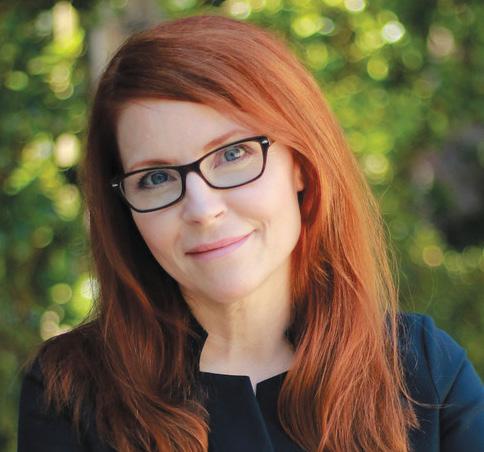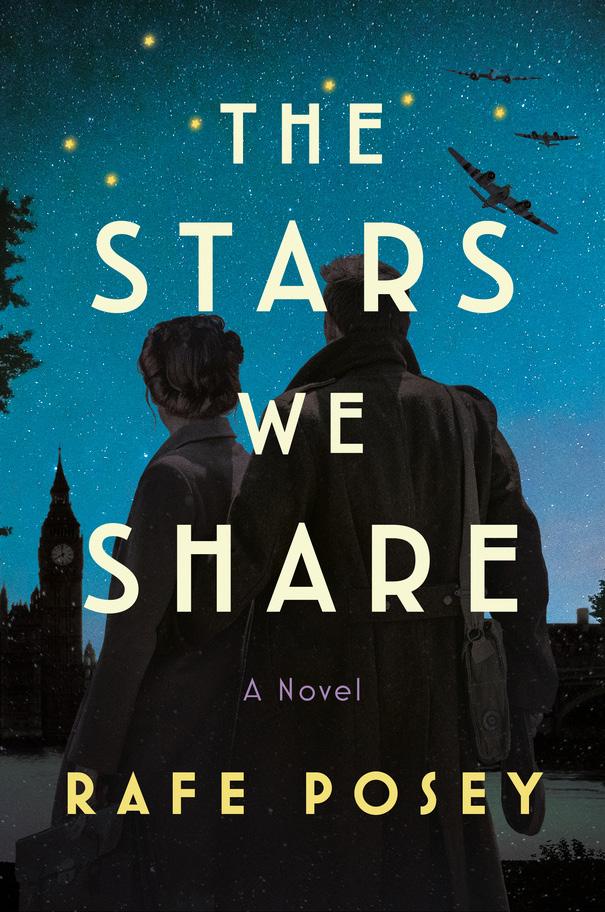
8 minute read
New Voices
Hope Adams, Rafe Posey, Dianna Rostad and Rebecca Starford have brought to life welldocumented historical events through the tragedies and achievements of individual lives.
credit: Nessa Kessinger
Advertisement

Hope Adams Rafe Posey

Dianna Rostad © Jaden Photography Rebecca Starford

credit: Bodie Randall
When writing Dangerous Women (Penguin UK/Berkley US, 2021), Hope Adams was faced with the “big problem” that faces every writer of historical fiction: “How faithfully do you stick to the known facts and how much can you invent? Can you mess with the historical record? My novel is about a particular voyage made in 1841 by the Rajah, which carried 180 women convicts from London to Van Diemen’s Land (present day Tasmania).”
As Adams points out, “This is a well-documented trip. We have the Captain’s Log and the Surgeon Superintendent’s log. We know the names and crimes and vital statistics of every single woman. Kezia Hayter, the Matron, kept a diary. And we have the Rajah Quilt. It hangs today in the National Museum of Australia in Canberra.”
In 2009 Adams saw the quilt “at the Victoria and Albert Museum in London,” she relates. “It was on loan for an exhibition called Quilts, and the moment I saw it, I knew I had to write about it. For many years I was looking over my shoulder, hardly able to believe that no one was out there writing about it already.”
However, for the purposes of her novel, “I added an element of mystery and suspense. One of the women is not who she says she is. The book begins with a shocking act of violence. And so we have a ticking clock: will the attacker be discovered before the ship arrives at its destination?”
Kezia Hayter, one of Adams’ pivotal characters and a passenger on the voyage, was “23 years old and well-connected. Her cousins were painters at the court of Queen Victoria.” She kept a diary and “was interested in prison reform. She helped Elizabeth Fry and worked in prisons on land. She was appointed by the Ladies’ Committee to help the women as Matron. She was pious, and I feel that sentiments I’ve given her on the subject of the treatment of women aren’t far from what she’d have thought.”
However, for Adams, “The most astonishing fact about this voyage is one I can’t reveal for fear of spoilers, but you will read it and think I made it up to create a happy ending. I didn’t. It’s 100% true.”
In The Stars We Share (Pamela Dorman/Viking, 2021) by Rafe Posey, the characters’ ultimate fates are tested by the time they inhabit. Posey currently teaches writing, English, and humanities courses at a maximum-security prison in Maryland.
He explains: “In the beginning, all I knew about the book that became The Stars We Share was that there was a boy who had come from far away, and a girl he would love more than anything, no matter what, for his whole life. I knew there would be a bear and a princess on the frozen Thames, surrounded by the performers and hawkers of a Shakespearean frost fair. And I knew there would be a war.”
Posey has “always loved history and fighter planes,” he says, “so it seemed natural to write about WWII and the RAF. Before long there was Alec, an English pilot full of stories from his childhood in India, and June, a vicar’s daughter in the marshy east of England. I wanted June to be more than someone waiting on the home front, and after watching The Bletchley Circle I became intrigued by the post-war lives of the women who worked at Bletchley Park.
“Having June be part of that covert work, especially in the Foreign Office’s farthest outposts, gave her a purpose and drive that was purely hers, but it also let me explore the impact the war, and the Official Secrets Act in particular, could have on a woman and her family.”
After he had the “kernels” of his story in place, he says, “I was able to indulge myself with the research, because one of the great joys for me in telling a story is giving myself permission to build a world. Suddenly I needed to know the rumble of a fighter plane in the night sky over the English Channel, the smell of a horse farm in Kenya, or the scratch of a mongoose in a roof in Sri Lanka.”
He discovered that the more he researched, “the more I understood the nuances of how my characters’ struggles informed their trajectories. The layers of tension born of their very different wars, and rooted in their private traumas and secrets, created a particularly challenging and complicated road for Alec and June. But in the end it was always about the same pair I’d known from the beginning, no matter how insurmountable their obstacles often seemed.”
Rebecca Starford, who lives in Brisbane, Australia and is a co-founder and publishing director of the literary magazine Kill Your Darlings, has “always been interested in WWII London and espionage.”
When Starford began writing An Unlikely Spy (Ecco, 2021), she states, “I did so with a simple question: what kind of young woman becomes a spy? My research uncovered a young woman named Joan Miller. Like my protagonist Evelyn, she was recruited into MI5 in her early 20s, was taken under the wing of spymaster Maxwell Knight (later the inspiration for ‘M’ in Ian Fleming’s James Bond) and was tasked with infiltrating groups sympathetic to the Nazis at the beginning of the war. Her investigations led to many arrests




and secret trials, but she was promptly dismissed from the Service, and died in a mysterious car crash not long after she had published a memoir about her time in MI5.
“These novelistic real-life events were ideal material to adapt into fiction. But what most interested me was the substance of this young woman, her inner life, which required so much deception, ingratiating and performance. In An Unlikely Spy, Evelyn must adopt the persona of someone with unforgivably abhorrent views, while at the same time negotiating intimate friendships with the enemy. What toll does this take on a person? Joan Miller described the pain she felt giving evidence against these traitors. What kind of emotions would Evelyn grapple with? Who else would she betray along the way? And who are you if you lie to everyone about your real self?
As a result, says Starford, “I decided to shape Evelyn as someone who, while possessing intelligence, confidence and ambition, remained nonetheless uncertain of her true self. From her modest childhood in Southern England, she moulds herself into someone she believes will fit in and succeed in the upper-class milieu she comes to inhabit. But what ultimately drives An Unlikely Spy is how Evelyn, complex and fraught as she is, responds when placed under extraordinary pressure – the kind of pressure experienced on a grand scale by the United Kingdom at the beginning of the war, when the fear of German invasion was MI5’s most urgent crisis.”
Dianna Rostad’s characters, like those of Starford, enshrine individual struggles both moral and physical. Rostad, who for many years has been a member of the HNS, explains, “There is a big piece of my heart and soul in You Belong Here Now (William Morrow, 2021), remnants of people I’ve loved, feelings I’ve endured that will burst a heart.”
In 2007, she says, “I read an online article about the orphan train. I’d never heard of it. That alone reeled me in. I’m always amazed at the holes in our collective education. Was I not listening in class? I googled to see if anyone else had published fiction about the orphan train. Nothing, except some young adult to mid-grade stuff from the eighties came up. I was astounded no one had ever written a novel about these precious street kids, bravely setting off for the unknown.”
The story, she continues, “should have been enough to put my nose to the grindstone, but I was still in the 19th century lusting over Lord Byron, my favorite bad boy from Regency London. Such is the allure of that legendary poet. I picked up my orphan train manuscript from time to time and worked on the storyline but always put it back in the proverbial drawer. It was as if I had become that little wild horse from the opening of my book, wreathing around on the fence for a good ten years, stuck.”
However, the real passion for Rostad’s story, she says, “began during a visit from my father over Christmas in 2010. He brought pictures from his family’s ranch in Montana, stories, and opened up a big space where I could see things falling together. Many of the characters in the book, the way they talk, songs, legends, are all from my family. Charles is based on my son, who was seventeen at the time, tender inside, but a fierce protector of his siblings. As you’ll read in my book, Charles defends his new siblings with such fervor, he frightens people.”
As for another character: “Nara began as her namesake, my maternal grandmother, but over time, morphed into my brave, strong-willed, eldest daughter who was a natural leader. She was my ‘rule book’. And in You Belong Here Now, Nara is all about following the rules. Charles believes the only rule is ‘don’t get caught’. And this is where Charles and Nara collide until each of them bends, seeing the wisdom of what lies in the middle. Rules and laws don’t always measure out justice to everyone in our world, only love can do that.”
In their novels Adams, Posey, Rostad and Starford have enabled readers to accompany their characters through their challenges and to explore the possibility that love and friendship can triumph even in the face of great adversity.
WRITTEN BY MYFANWY COOK
Myfanwy Cook is an Associate Fellow at two British Universities and a creative writing workshop designer. Please do email (myfanwyc@btinternet.com) if you discover any debut novels you would like to see brought to the attention of other lovers of historical fiction.







